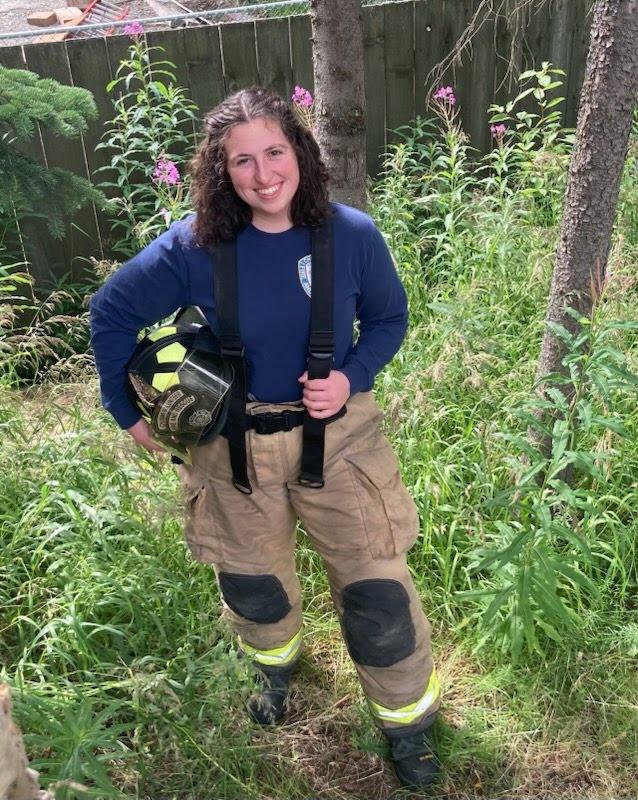Recent News
As LOBOMotorsports director plans retirement, $1 million endowment ensures his legacy will continue
October 30, 2025
College advisor uses Girl Scout leadership experience to design new NSO activities
October 6, 2025
Ph.D. student receives grant to present at MECC 2025
August 22, 2025
Shen reflects on 9 years as mechanical engineering chair
August 19, 2025
News Archives
Student's fire safety research wins ASEE conference award
March 27, 2025 - Carly Bowling
When Erin Lawlor wraps up her semesters as a mechanical engineering student at The University of New Mexico, she returns home to Anchorage, Alaska and spends summers working as a volunteer firefighter.

Last summer, she spent her free time at the firehouse working on online courses for a minor in Fire Science. Throughout her time up north, coworkers and family members sent articles about new engineering technology. When she learned about a potential community of tiny homes as a low-income housing solution built from 3D-printed wood sawdust suspended in resin, she wondered what might happen to the material in a fire. There in the firehouse, a hypothesis was born.
“This is a really neat way of creating a low-income housing option with lower manufacturing costs, but the wood-reinforced polylactic acid (PLA)is a thermoplastic and when it catches on fire in a tiny home setup where they are packed close together, it spreads so much faster than it would in a community built with traditional materials,” Lawlor said.
When she returned to campus in the fall, Mechanical Engineering Professor Tariq Khraishi asked if she was interested in doing undergraduate research. If she had an idea, he would help her build out the project. Materials and fire safety testing were a natural fit after a summer spent pondering how the wood-reinforced resin might behave in a fire. Throughout the Fall semester, Lawlor conducted research on similar materials to test her idea.
Earlier this month, the resulting research paper won second place in the Best Student Paper Competition at the American Society for Engineering Education (ASEE) Gulf-Southwest Section Conference held in Arlington, Texas. Students from New Mexico, Texas, Louisiana, and Oklahoma attended.

Lawlor’s paper, “Fire Behavior of 3D Printed Wooden PLA Materials,” explored how homes made of wood-reinforced polylactic acid (PLA) would present new challenges to firefighters because alternative materials may release more toxins during a fire and may burn faster than traditional homes. Lawlor also hypothesized that the close placement of tiny homes made from the material could pose additional fire risk to the community. In her experiments, she was able to test the horizontal burn rate of standard PLA and wood-filled PLA. She concluded that the wood-filled samples burned much faster than the standard PLA samples. Lawlor also emphasized that a real house fire would burn vertically rather than horizontally, and in the case of wood-filled PLA could result in melting and structural collapse.
While her results are preliminary, Lawlor hopes they may inspire further research into the material to help enhance safety for residents and firefighters alike.
“Undergraduate research is a great opportunity for students to work on a problem, i.e., what is called in the literature “Problem-Based Learning.” It allows the student to dig deep into a problem and do research like graduate students through reading literature and previous works related to the student’s research,” Khraishi said. “Erin’s research problem was unique as no previous researchers have looked at the fire behavior of 3D printed plastics and wood chip composites, which look like a wood build. It is an exciting new area.”
Lawlor was surprised but excited to win second place for her paper and thanked Professor Khraishi for his support and advisement throughout the research process.
As Lawlor continues to expand her materials testing research in the coming months, she plans to expand her data points, test a standard building material, and look at material changes under a microscope.
She will graduate this Spring with her bachelor’s degree in Mechanical Engineering and plans to pursue a master’s degree in fire protection engineering.
